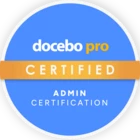Hi all,
I would like to hear some feedback/call outs/ Pro’s and Con’s on the below please!
When updating/versioning SCORMS, we were advised that the Best Practice was to hide and retire the existing SCORM, and then upload the new one. This is how we have been doing this to date when needed.
Another method is to edit the SCORM in the repository and upload the new SCORM which then reflects a ‘V2’ in the file name.
Does anything make one method better than the other? Do we lose any data points using one ver the other? Does it matter which way? Any reporting impacts?
Thanks in advance!






